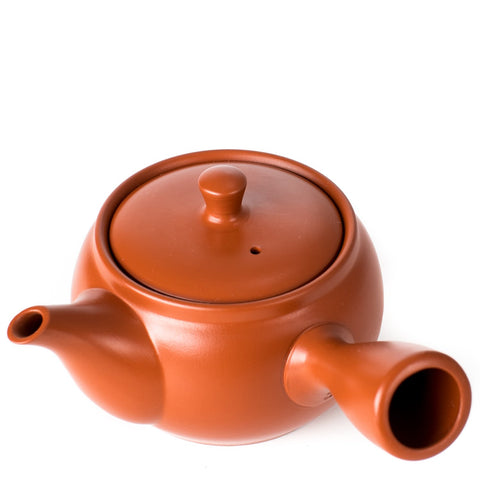Many tea drinkers around the world might be under the impression that teapots were invented practically the same day the tea leaf was first brewed! It’s an interesting idea, but not an accurate one. The teapot itself had to go through some evolution in times past.
Was Tea Always Brewed Gong Fu Style?
Since the origins of tea in China, tea was not always brewed gong fu style. In fact, gong fu tea didn’t come about till centuries later. Also, tea was not always brewed in teapots. From the beginning of tea culture in China, tea leaves were made into molds, then grounded and boiled into a frothy drink resembling modern-day matcha. This was during the Song dynasty (960-1279).
At the time, the tea was boiled in cauldrons rather than tea kettles. Later on, it was whisked directly in tea bowls similar to those used for matcha.
When Was The Teapot Created?
Shapes similar to those of the modern-day teapot have existed within Chinese pottery for thousands of years. However, these teapot-esque vessels were never explicitly used for drinking tea. Instead, they were used for water and alcohol.
The teapot as a vessel for brewing tea didn’t appear till the Ming dynasty (1368-1644) when loose leaf tea started gaining popularity over powdered tea. It was no longer a matter of whisking already powdered tea leaves in boiling water. Instead, tea drinkers needed to find a way to brew delicate tea leaves without sacrificing flavor. It is believed the teapot, as we know it, was developed specifically for brewing Wuyi Mountain Oolongs.
Small clay teapots, which we now associate with gong fu cha, were indeed created in Yixing city, Jiangsu province, sometime in the 1500s. The teapots were created using the region’s vast clay deposits.
There is some evidence that historically tea was drunk directly from the spout of the teapot and sometimes from gong fu cups. Whether this is true or not, we can’t say for sure. However, make sure that the water in the teapot is cool enough before trying this yourself!
The Evolution Of The Teapot
Nowadays, there are countless variations of teapots.
For example, it is said that the Japanese kyusu teapot was developed around the 1500s and didn’t come into mainstream use until after the 1600s when commoners began drinking sencha green tea. A representative feature of Kyusu - its side handle - became popular in Japan during this period, influenced by Chinese designs.
The same goes for Japanese cast iron tea kettles — tetsubin. Tetsubin first started appearing during the 16th century, with the growth of sencha. By the 18th century, most households started using a tetsubin for heating water. During the 19th century, the craftsmanship of the tetsubin makers began growing. These cast-iron kettles slowly started becoming collection pieces with quite spectacular designs!
Read more: All About The Japanese Cast Iron Teapot: Tetsubin
During the 17th century, tea was widely exported to Europe together with porcelain teapots. Porcelain production was booming in China at the time. However, the teapots were primarily crafted for export since the porcelain material could withstand the long travel by sea and the humid salty air. On the other hand, Yixing teapots would not have been able to keep well in such conditions. Because Europeans didn’t drink tea the way one would in China, they preferred larger teapots with long curled spouts, in contrast with the short straight spouts of Yixing teapots.
While teapots have evolved across the years, the standard modern-day teapot has barely changed over the past 300 years.

